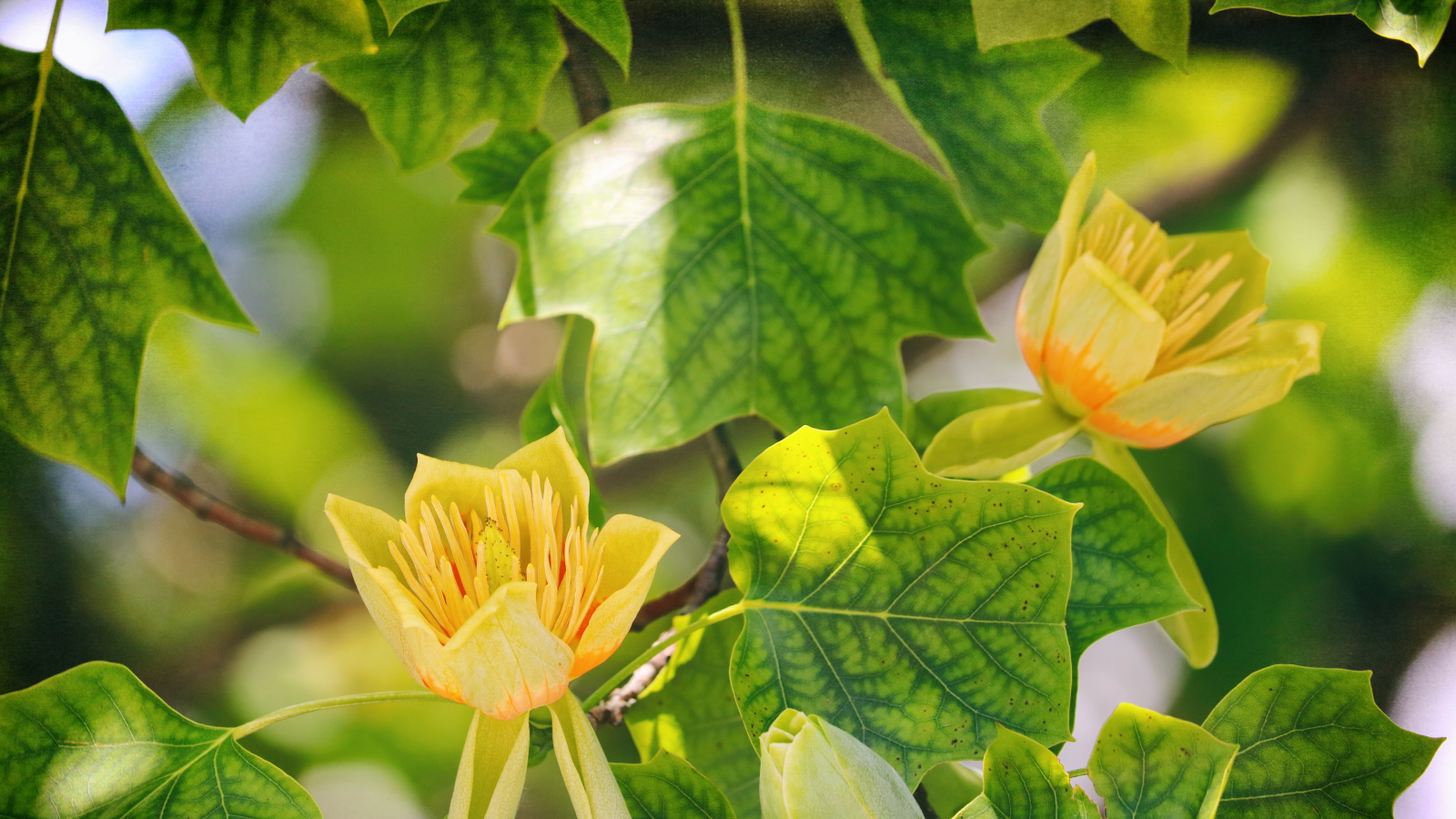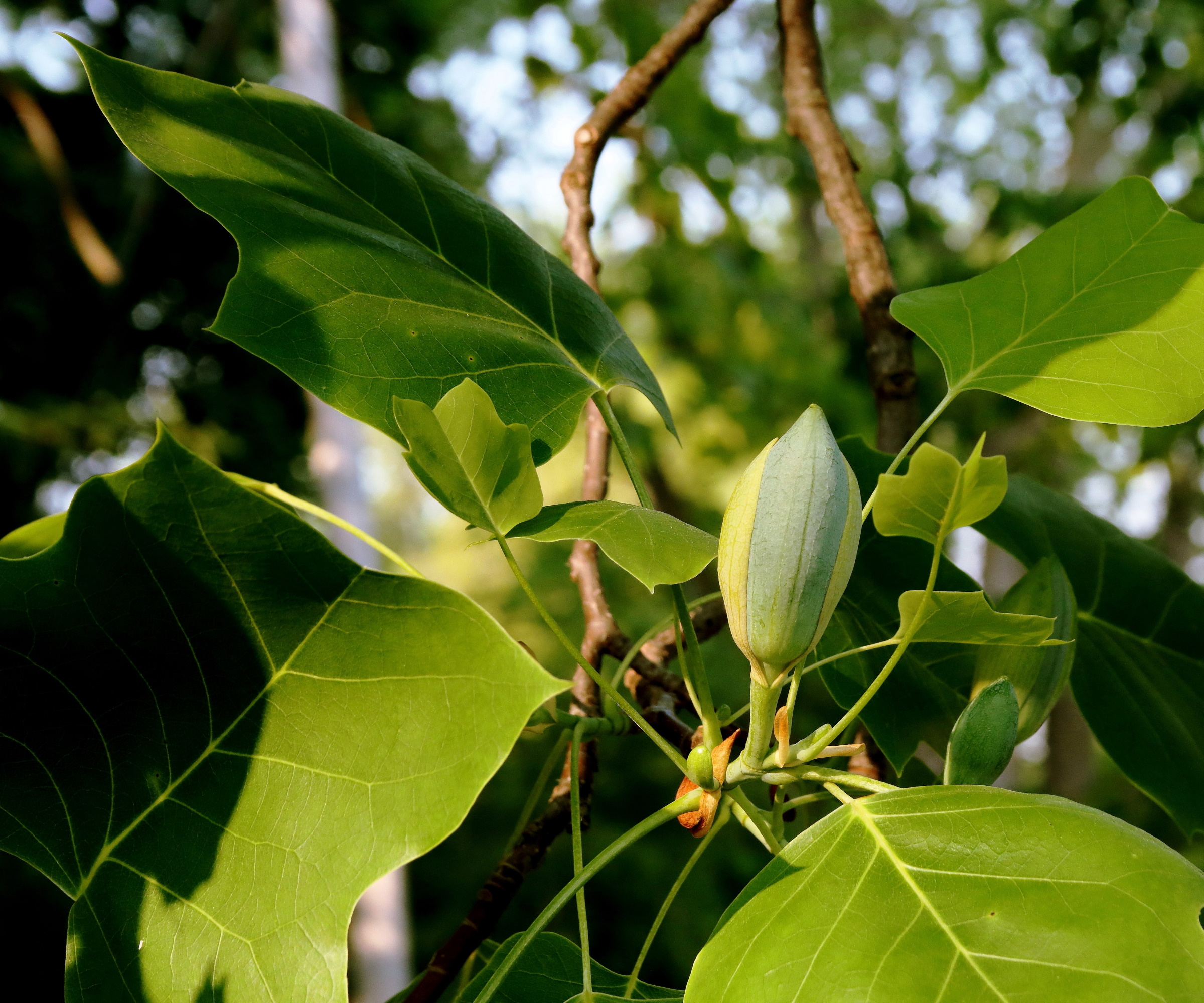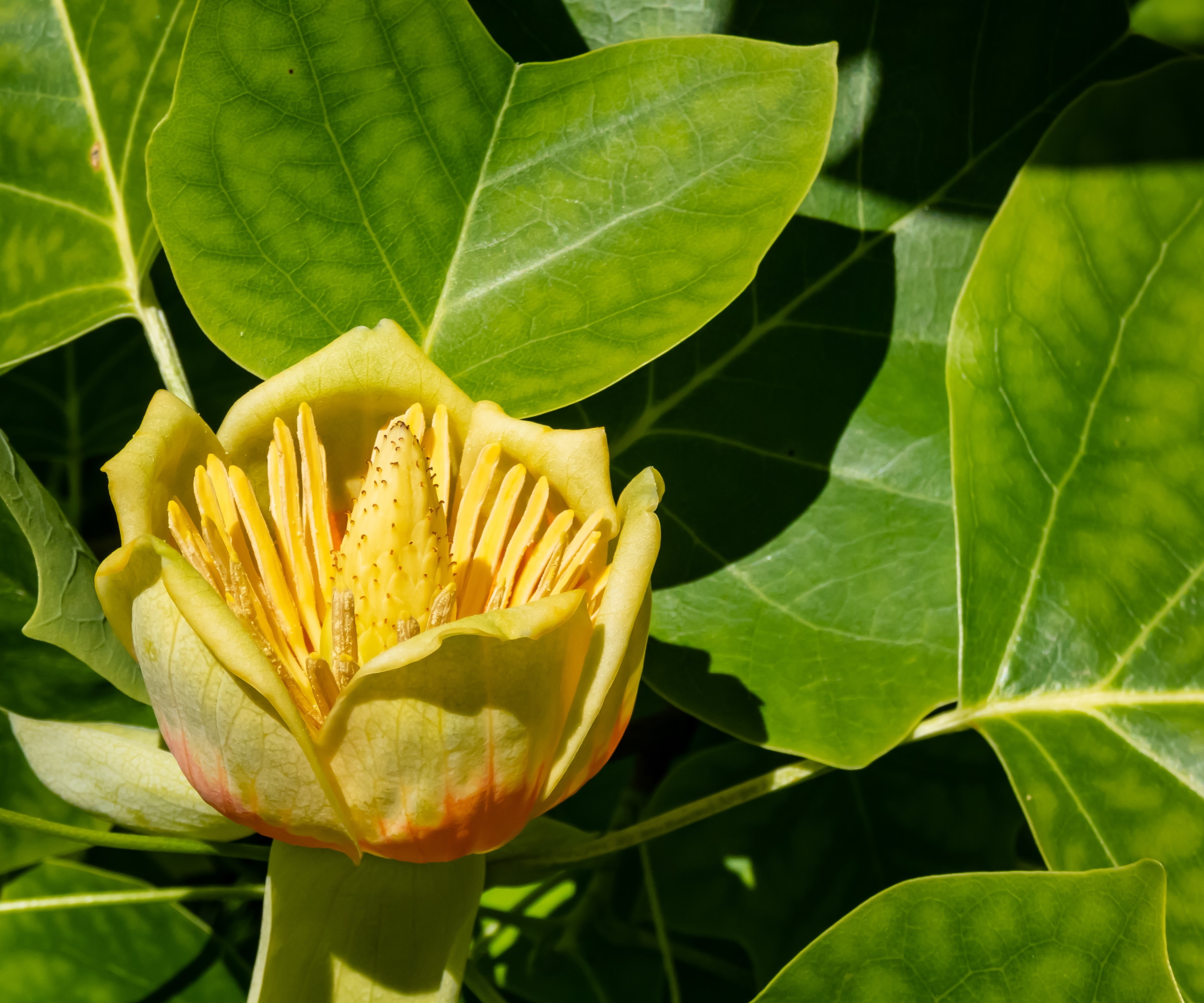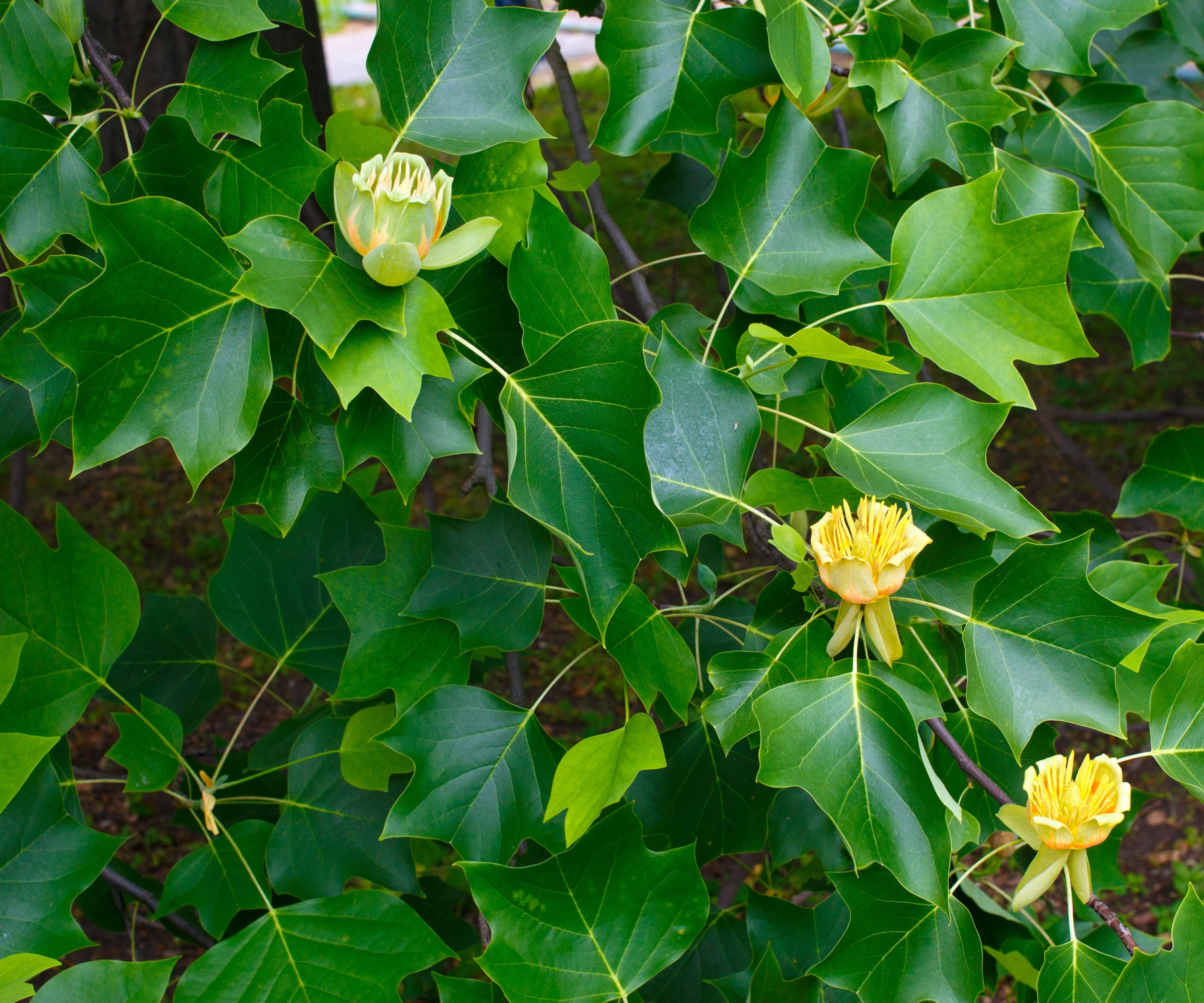
The tulip tree, Liriodendron tulipifera, is a large deciduous tree native to North America. The tree gets its name from the shape of its blooms, which appear tulip-like when they begin to open. The tulip tree is not related to the tulip genus, but is part of the magnolia family, Magnoliaceae.
For those looking for backyard ideas this year, planting the tulip tree is an excellent choice for gardeners with large outside spaces. Renowned for its flowers, the tulip tree also produces remarkable foliage, as seen in the images here, with large, glossy green leaves that create a golden display in fall.
Here, experts offer advice on how to cultivate and care for tulip trees, considered one of the best fast-growing trees, helping you to grow a healthy and floriferous tree that will be a special addition to your outdoor space.

How to grow a tulip tree
Tulip trees are unique and striking. Known for reaching great sizes, planting a tulip tree is an excellent choice for gardeners with a large backyard. The tulip tree will go on to produce beautiful blooms and attractive foliage, often considered one of the best trees for fall color.
Things to know about tulip trees

Tulips trees grow best in US hardiness zone 4 to US hardiness zone 9. When younger, tulip trees can be 'cold sensitive,' says Tatiana Anderson, tropical plant expert and co-founder of Top Tropicals, 'so it is best to keep frost off young saplings.'
'Well-established trees are hardier but smaller trees will get frost damage,' Tatiana says, which is something to bear in mind if you reside in a cooler zone.
This tree is 'fast growing and can reach a great size,' Tatiana adds, notable for its tall, straight trunk, often reaching up to 100 feet or more in ideal conditions. As a large tree, it is considered a focal point in any landscape, noted as one of the best trees for shade, with large canopies that can protect homeowners and wildlife from the harsh summer sun.
Noted as a resilient and beautiful tree, it is a favorite among gardeners and pollinators alike, celebrated as a tree that attracts hummingbirds.
Tatiana adds that because of its size, 'it is not recommended for container growing, as it will grow out of its container in 3 to 4 years or less.' Tulips trees are more suited to growing in the ground, so ideal for those with larger plots.
The tulip tree is a member of the magnolia family. This beautiful tree is covered in light, greenish-yellow tulip-shaped flowers with an orange and from April to June in the summer months. The tulip poplar flower puts on a gorgeous display during the spring and summer blooming season.
Growing guide for tulip trees

- Soil: Tulip trees, 'also known as tulip poplar or yellow poplar belong to the magnolia family,' says Jennifer Curtis, plant expert and nursery manager at Schilling's Garden Market, Oregon. As is common for most magnolia species, the tulip tree prefers well-draining slightly acidic soil, preferring not to sit in water. 'This tree does not do well in very wet or very dry conditions. One tip to improve the quality of the soil and retain moisture is to spread bark mulch over the root ball after planting.'
- Light: This tree 'requires a full sun position in the backyard, meaning that it will get at least 6 hours of direct light every day,' Jennifer says. Part sun, enjoying at least 4 to 6 hours of direct light, should also be fine, but remember that the less light the tree gets, the fewer flowers that will bloom.
- Watering: It is best to regularly water your tulip tree in the first year after planting, particularly during the summer months when the temperatures rise. 'Newly planted trees require regular watering to establish their roots,' Jennifer adds. It is recommended to water in the early morning, ensuring that the tree can soak up water before the heat of the day.
- Fertilizing: Jennifer recommends using a 'slow-release, balanced fertilizer of nitrogen, phosphorus, and potassium (NPK) that will benefit the tree, applying in the early spring months to support flower blooming and then applying in late spring or early summer to support growth.' Using something like this tree and shrub feed from Walmart, place fertilizer spikes or granules away from the trunk, towards the drip line of the canopy.
- Pruning: As tulip trees grow so fast, occasional pruning is important to keep them under control. Tulip trees can often produce large branches and limbs that can pose a hazard during fall and winter when there are strong winds. It is best to remove dead, damaged, or weak growth in late winter or early spring, using a pruning saw to neatly remove old wood. For larger, established trees, it is recommended that you seek help and assistance from a local tree surgeon.
- Additional Tips: Jennifer advises that tulip trees can go on to reach 90 to 100 feet tall, so considering the placement of this tree and its future spread is important. It is generally not suitable for growing in smaller yards or container gardens and grows better when given plenty of space where it will not require annual pruning.
FAQs
Can I grow a tulip tree in a small yard or a container?
Tulip trees can reach great heights with wide canopies. For this reason, it is not recommended that you grow these trees in small yards or in containers. Tulip trees grow well and look their best when they are positioned in a large and open space, where they can grow freely and will not obstruct any other tree or structure.
If you have the space, planting a tulip tree is a sensible backyard investment that will produce brilliant blooms and attractive foliage every year. If you are looking for other striking and unusual trees to add to your backyard this year, consider planting a pawpaw tree, for spring blooms and nutritious fruits.







